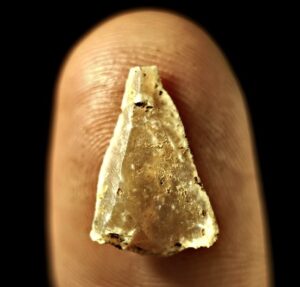
AMERICAN ASSOCIATION FOR THE ADVANCEMENT OF SCIENCE (AAAS)—In Grotte Mandrin, a rock shelter in southern France, researchers have discovered what could be the earliest evidence for bow-and-arrow technology used in Europe by modern humans around 54,000 years ago. The findings hint that these weapons may have been critical to modern humans’ advantage over Neanderthals during their first migrations into Neanderthal territory. Projectile weapons like bows and arrows and spear throwers are thought to have appeared abruptly among modern humans in Eurasia during the Upper Paleolithic period roughly 45,000 years ago. Such advanced weaponry is believed to have given modern humans leverage over Neanderthals, but its origins and sophistication have remained unclear. A recent study at the Grotte Mandrin site, located near the Rhône River valley in southern France, uncovered 54,000-year-old dental remains from modern humans, which suggests that humans arrived in the area some 10,000 years earlier than previously thought. (See below for a link to a related study published in Science Advances, co-authored by the authors of the current study.) Now, Laure Metz and colleagues have identified hundreds of 54,000-year-old artifacts from the same site that have telltale signs of past use as projectile weaponry. The researchers recovered 852 artifacts resembling well-defined points, blades, and flakes, many of which display wear patterns indicative of having been thrusted or thrown (percussive motion) or used to saw or cut (pressure motion). In total, they identified 383 objects with such patterns, including 196 with signs of percussive wear – primarily on points, micropoints, and nanopoints. These findings suggest that projectile weaponry such as the bow and arrow could have been mastered during, rather than after, modern humans’ incursion into Neanderthal territory. “The use of these advanced technologies may be of crucial importance in the understanding of the remarkable expansion of the modern populations,” Metz et al. write.
A 2022 study published in Science Advances, co-authored by the authors of the current study, reported that 54,000-year-old hominin dental fossils were found at the Grotte Mandrin site – indicating that modern humans arrived in Neanderthal territories some 10,000 years earlier than previously thought: https://www.science.org/doi/10.1126/sciadv.abj9496
________________________________
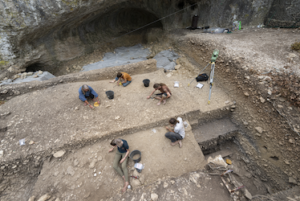
View of arrcheological excavations at the entrance of the Grotte Mandrin. Philippe Psaila
________________________________
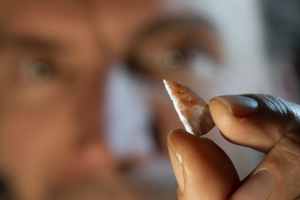
Dr. Ludovic Slimak showing a flint point made by the first modern humans n Europe. Philippe Psaila
________________________________
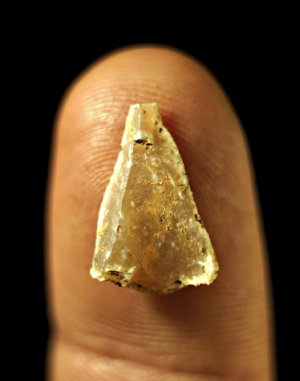
Tiny points made by Homo sapiens 54.000 years ago and used as arrowhead. Laure Metz/Ludovic Slimak
________________________________
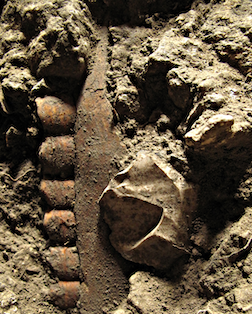
A horse mandibular and a Neronian point appearing on the archeological layer E (Neronian) from Grotte Mandrin. Ludovic Slimak
________________________________
Article Source: AMERICAN ASSOCIATION FOR THE ADVANCEMENT OF SCIENCE (AAAS) news release.
*Bow and arrow, technology of the first Modern humans in Europe 54,000 years ago at Mandrin, France, Science Advances, 22-Feb-2023. 10.1126/sciadv.add4675
________________________________
Advertisement

Don’t miss out on this unforgettable evening as Dr. Hawass reveals the most closely guarded secrets of ancient Egypt and presents his groundbreaking new discoveries and latest research live on stage. As the man behind all major discoveries in Egypt over the last few decades and director of several ongoing archaeological projects, Dr. Hawass may yet surprise you with unexpected revelations that will make news across the world.





